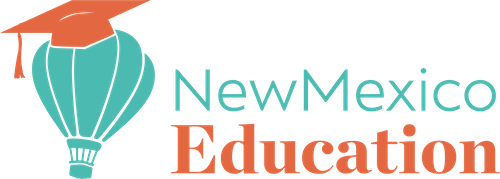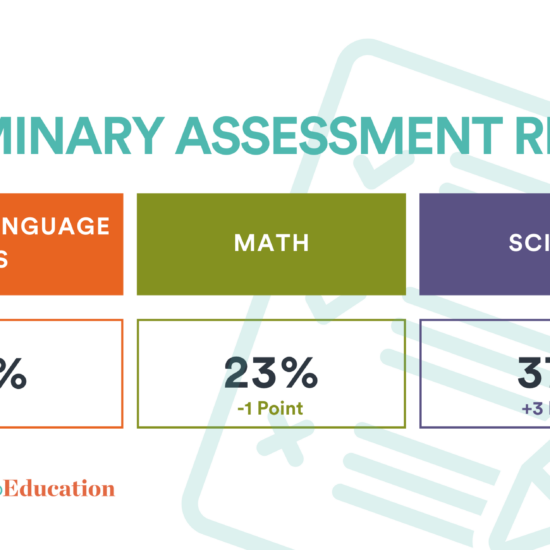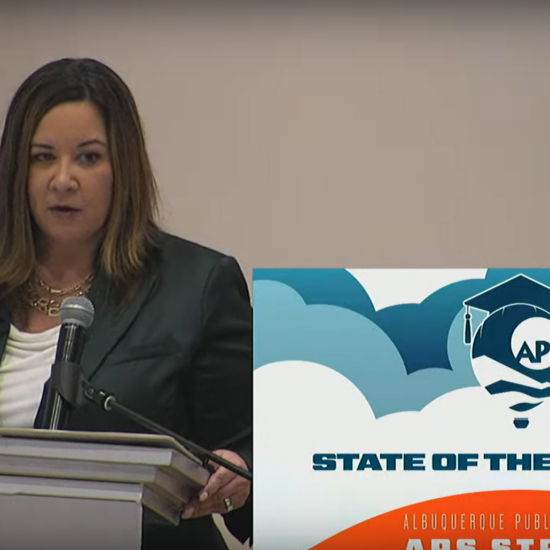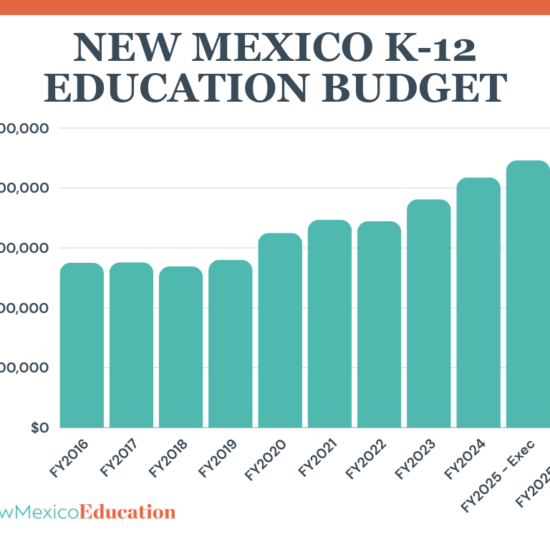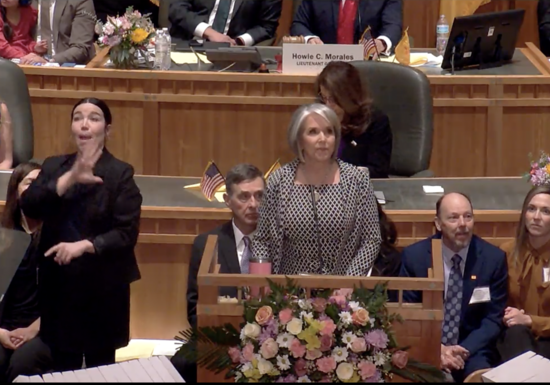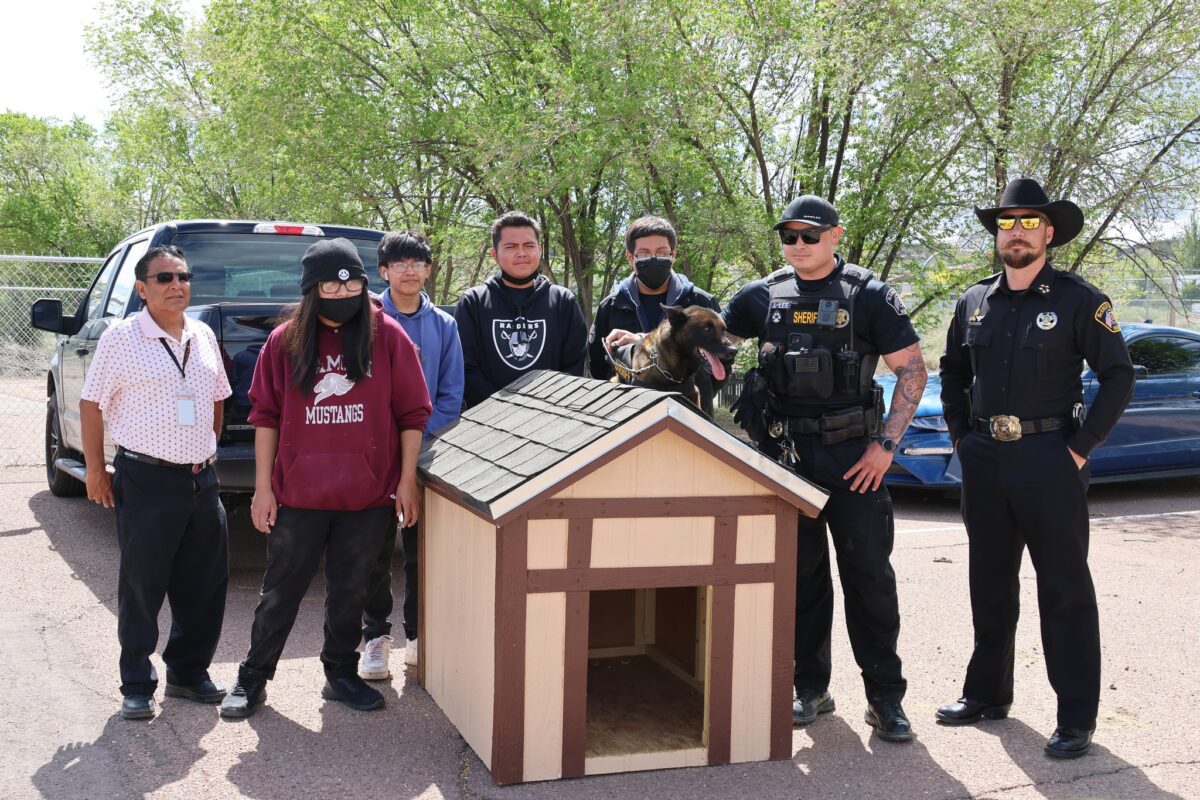
The Gallup-McKinley County School District (GMCS) is working to equip their students with tools to be successful in future careers. Through the career-focused education they offer, GMCS is hoping to increase graduation rates and better prepare students to successfully enter the workforce.
The district offers students a career-focused education by exposing them beginning in elementary school to different job opportunities and providing opportunities to consider future careers.
In middle school, students are asked to think about what they might want to do for a career, and in high school, students are offered courses and skill development opportunities so they better understand how their learning is connected to their future career goals, like mechanics, media arts, or computer science.
The district’s instruction links traditional coursework with career-focused learning. Students take traditional courses like English Language Arts, mathematics, and science, though these courses are taught in a way that connects the work they do in those classes to their career pathway.
How did this initiative begin?
Ten years ago, GMCS began an effort to turn around its schools and improve the academic achievement of its students. “This is a massive project. The district had been at a point where teachers were teaching whatever they wanted, there was no curriculum for the district, there was not a lot of targeted professional development to help teachers become the best that they can be for the students, so we did a lot of work over the years to shore ourselves up,” GMCS Superintendent Mike Hyatt said.
The district’s turnaround was gaining steam prior to the pandemic. “We did a lot of work for years trying to shore ourselves up in regard to instruction,” Hyatt said.
When students returned to the classroom after the COVID school closures forced the district into virtual learning, there was a noticeable difference in attention spans and interest in schoolwork, Hyatt said. So, the mission became to make schoolwork relevant to their futures.
Four years ago, the GMCS school board approved a strategic plan called, “Elevate 2022” which has since been updated, but the spirit of the plan has remained. “We’re really not preparing our students for graduation,” Hyatt said. Instead, “It’s about how we help our students be productive citizens and be able to explore the options they have post-high school. So, we really became a career focused school district rather than a graduation-focused school district.”
The work was slow. GMCS wanted to ensure that the educational foundations like English Language Arts, mathematics, and science were strong and relevant to modern students. Across the country, Hyatt said, students involved in career-focused education were more likely to graduate.
Discovery Centers
Elementary school students at GMCS can go to their school libraries, which are being renamed “Discovery Centers,” where stations are being built to offer young students hands-on, interactive learning opportunities about different jobs. This is the beginning of a student’s career pathway journey at GMCS.
Middle school students are taken on career-exploration opportunities. They are exposed to different businesses and companies to help students begin thinking about what career path they might be interested in.
When students enter high school at GMCS, they begin their career pathways. “Last year, we had almost 160 interns. High school students are going to different businesses and interning,” Hyatt said.
Deputy Superintendent Jvanna Hanks explained that some students are even interning at GMCS. All intern students are paid for their work. Students are connected to different careers, like a hospital or law firm.
What if students change their career decision?
GMCS offers “employability skills” courses to its students starting at sixth grade. These skills may seem simple, like showing up to work on time, collaborating with peers, and the importance of completing tasks, but are “soft-type skills that individuals don’t necessarily [learn] until they get into a career,” Hanks said. Both Hyatt and Hanks said that these soft skills are important to the professional development of students in their career. With these soft skills, they said, the district is preparing students for all types of careers.
But students are young, and sometimes change their minds. If a student begins their high school journey wanting to be a mechanic, but in their senior year decide mechanics isn’t for them and they would rather work with animals, their time in high school will not have been wasted. Hanks said that all career pathway instruction is done in a way she called, “linked learning.”
Students are learning broad skills that transfer across all types of career opportunities. Linked learning allows students to learn skills in a broad range and take those to other careers if they ever change their mind. Hanks said GMCS supports their students and are making the extra effort to incorporate traditional learning with the students’ chosen career pathway by linking traditional, core subjects to chosen career pathways.
“We’re not trying to fit [students] into any single career path,” Hanks said. “We can’t offer every single career in every single school. We have schools with only 50 [students]. How do you get the staff to do something like that?” Hyatt said. Students aren’t fixed into any one specific job skill.
Before students enter high school, GMCS works to help them understand different job opportunities that are available so they have time to consider what work they may want to do. The district allows students to be involved in their chosen career pathway and looks for opportunities to connect students with the appropriate tools for the pathway, even if it isn’t offered at the student’s school.
GMCS already links multiple career pathways. Students that are interested in becoming chefs or bakers are working with the chemistry department in their schools to better understand the chemical composition of bread, how to combine ingredients, and create yeast. Students interested in a biomedical science pathway that are learning about Romeo and Juliet in their English Language Arts courses can link their learning by discussing the brain development of the young characters.
“There are ways to put information together that maybe you don’t see natural pathways to, but you can link to. These are skills that students can use their whole lives,” Hanks said.
Other Opportunities
While GMCS is focused on preparing students for future careers, they also offer other opportunities for students more interested in civic service. GMCS is one of the largest rural districts in the state, at 4,857 square miles with more than 11,000 students.
GMCS has 400 students in Early College High School where they can earn an associate degree or higher as they graduate high school. The district offers a civic readiness course for students interested in military service, police, and political careers. Expenses are covered by the district, and students do not pay for any of the services.
